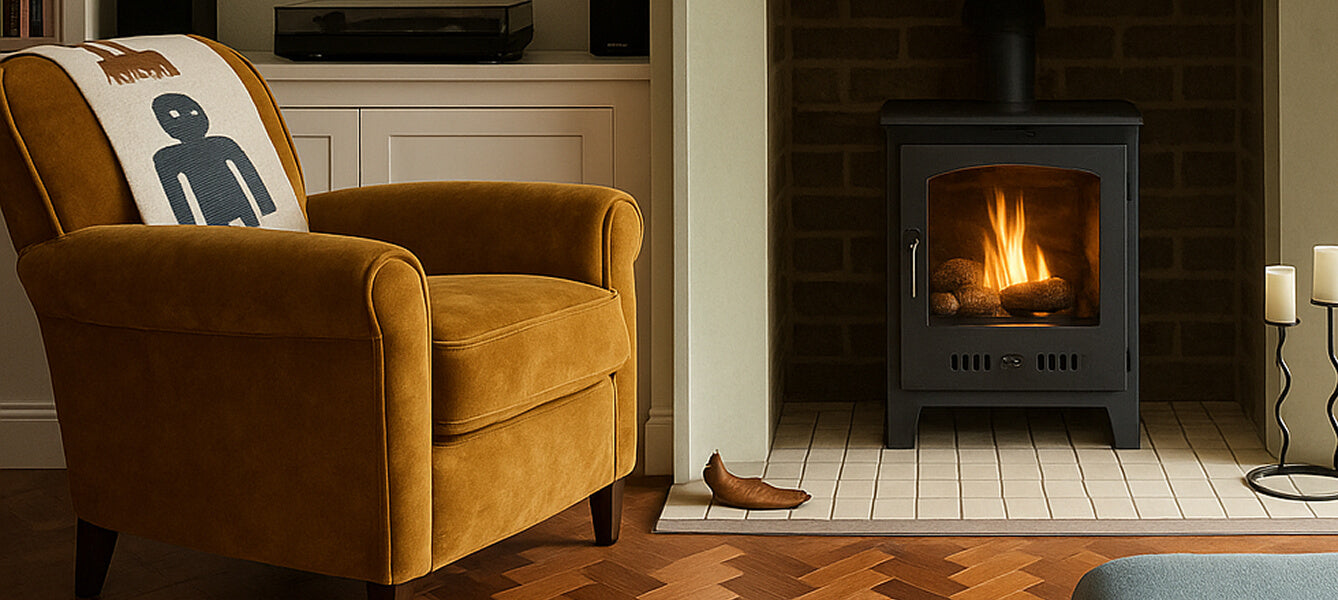Both ethanol and bioethanol are alcohol — basically the same thing. However, bioethanol intended for fuel has an added denaturant that prevents human consumption.
Bioethanol is made by fermenting the by-products of sugar and starch-bearing plants, such as cereals, sugar beet, maize, soybeans, wheatstraw, and corn, and has been used as a fuel for vehicles and heating systems since 1978. Considered a renewable source, burning bioethanol produces none of the toxic gasses associated with traditional fossil fuels.
Bioethanol burns cleanly without producing smoke, soot, or ash. In its liquid form, it leaves no residue, so there’s no cleaning up with a bioethanol fireplace.
Is it safe to burn bioethanol inside?
The bioethanol supplied for bioethanol fireplaces, such as our own-brand ImagiFuel, is entirely safe for indoor fireplaces, which need neither a chimney nor a flue.
For this reason, bioethanol is the perfect choice for people who want a real fire but can’t install a chimney — excellent for use in an apartment, flat, or conservatory. You can get the look of a traditional fireplace or a wood-burning stove without all the mess and pollution associated with burning wood or coal. You can even get wall-mounted bioethanol fires that complement modern living spaces perfectly.
Can I use gel bioethanol in my biofire?
There are two types of commercially available bioethanol fuel: gel and liquid. Gel fuels have a thick, waxy consistency and are more often used for outdoor biofires and camping stoves. Gels generally produce smaller flames and don’t burn as powerfully as liquid bioethanol.
Gels leave traces of residue after burning, while liquid bioethanol burns completely cleanly, leaving no residue at all. For this reason, never use bioethanol gel in your ImaginFires bioethanol fireplace — it could be dangerous.
Is the flame from gel bioethanol different from liquid bioethanol?
As well as the difference in texture, liquid-based bioethanol produces a more aesthetically pleasing flame than gel-based fuels. Liquid bioethanol produces the same large orange flames as a traditional fire (once the fuel box has warmed up), while gel-based flames tend to remain blue and almost transparent.
Never use bioethanol gel in your ImaginFires fireplace. Only use liquid bioethanol approved for indoor use. And savour a safe, beautiful flame that transforms your living space with the unique cosiness of an open fire (without the existential guilt!).
